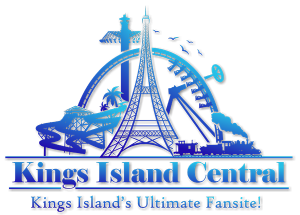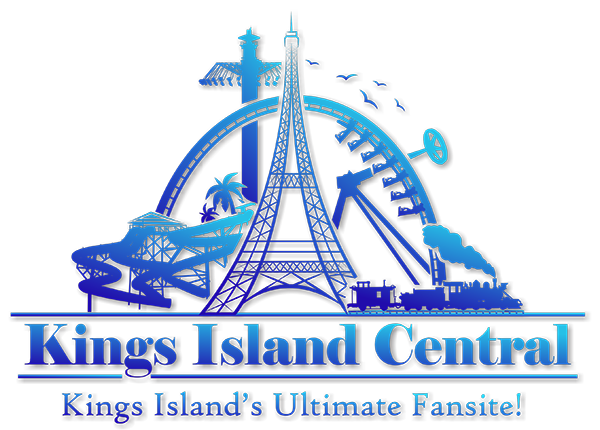Opened: 1974
Closed: 1993
Location: Wild Animal Habitat (today known as Action Zone) and north of Coney Island (today known as Coney Mall). Passed through areas today occupied by Adventure Express, Banshee, Xtreme Skyflyer, Flight of Fear, and Orion.
Former Names: Kenya Safari (1974-1976), Wild Animal Safari Monorail (1977-1978), Encyclopedia Britannica Safari Monorail (1979-1980), Wild Animal Safari Monorail (1981-1982)
Manufacturer: Universal Mobility, Incorporated
Model: Monorail
Length: 2 miles
Size: 100 acres
Cost: $5.5 million to $7 million (whole Lion Country Safari expansion in 1974)
Vehicles: Seven trains with nine cars per a train, with 12 passengers per a car. Cars could be air conditioned in summer and heated in winter.
Description: Wild Animal Habitat Monorail was a two-mile monorail through 100 acres of animal habitats, including animals from Africa, North America, and Asia. The attraction was originally included with park admission but was later made available for a nominal upcharge.
History: Kings Island announced a partnership with Lion Country Safari, Inc. on September 14, 1972. Lion Country Safari was a drive-thru safari company with locations in Florida, California, Georgia, and Texas. The agreement was for 55 years and the massive new Lion Country Safari area would open at Kings Island in 1974.
Unlike a typical Lion Country Safari attraction, where guests drove through the animal habitats in their own vehicles, Kings Island’s version included a two-mile monorail. The attraction was originally identified as Kenya Safari and was accessible from the new park area, which today is known as Action Zone. Despite using the name “monorail” throughout the attraction’s existence, it actually ran on two parallel rails and was therefore technically not actually a monorail.
Kenya Safari and the adjacent Lion Country Safari area opened on 100 acres with the park on April 27, 1974. Riders aboard the monorail’s trains were initially able to see animals including elephants, rhinoceroses, giraffes, lions, hippopotamuses, ostriches, zebras, and antelopes. The animals were split between three large sections – Umfolozi Reserve (large animals), Serengeti Plains (lions), and Tsavo Park (grazing animals). The sections were divided by fences, often hidden by trees and hills.
Kenya Safari was originally intended to operate year-round. It continued to operate outside the main 1974 season for a $3 charge, but did not operate through the winter as intended. 1975 onward, the ride only operated with the park.
Given the nature of the safari, animal births were a common occurrence. The park also frequently refreshed the monorail and surrounding areas with new animals. While it started as strictly African animals, it was later expanded with Asian, North American, and South American ones.
The safari underwent a massive renovation in 1976, reseeding all grassy areas and clearing underbrush. 13 tigers and 50 olive baboons were planned to be added, but the baboons escaped before the park opened for the season. After rounding-up all the baboons, the park elected not to host them. The monorail was $0.50 in 1976.
Also in 1976, a 20-year-old safari worker was mauled by a lion on July 24. The ranger had left his jeep for an unknown reason and was found by his coworkers after he failed to answer a radio call. Following the baboon escape and ranger’s death, Kings Island chose to sever ties with Lion Country Safari, Inc., and took over operation of the area. It was renamed Wild Animal Safari and the monorail became the Wild Animal Safari Monorail. The monorail was a $0.75 upcharge in 1977.
Encyclopedia Britannica began sponsoring the monorail in 1978. It was a $1 upcharge.
The Wild Animal Safari was renamed as Adventure Village in 1983 and the monorail became the Wild Animal Habitat Monorail.
Despite starting off as Lion Country Safari, the lions were removed from the attraction in its later years.
The Adventure Express roller coaster was added to the park in 1991. The monorail crossed over and under its track. Two years later, when Top Gun (today known as The Bat) opened, park guests had to walk around the monorail’s station to access the new roller coaster. By 1993, the ride had a $2 upcharge.
Kings Island announced the closure of the Wild Animal Habitat Monorail on November 2, 1993. The animals were sent to other zoos around the country, and the monorail track was scrapped. The trains themselves remained on property for several years before being sold to area grocery store Jungle Jim’s. Most trains are now used as display pieces at the store, but 600 yards of new monorail track was built and a monorail is used to transport guests for special occasions.
The maintenance building for the ride at Kings Island remains to this day and is now used for steel coaster maintenance. Many other components of the monorail attraction remain in place, including bathing ponds that can still be seen from Eiffel Tower and satellite imagery. Barns and sheds from the attraction also remained, with some later being used for storage.
There were rumors that the park would re-purpose the ride, sans the animals, and rebrand it as “Movierail”. This attraction would’ve been comparable to the studio tour at Universal Studios Hollywood, transporting riders through sets of famous Paramount films. This idea never came to fruition.
After the ride’s removal, its space was re-used for a variety of attractions. Drop Zone (today known as Xtreme Skyflyer) opened in 1995, XS Raceway and the Outer Limits: Flight of Fear (today known as Flight of Fear) in 1996, Son of Beast in 2000, Firehawk in 2007, Banshee in 2014, and Orion in 2020.
Photos

